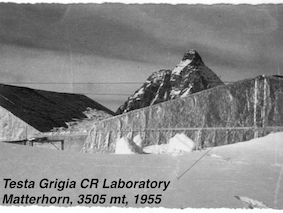Speaker
Dr
Moon Moon Devi
(Weizmann Institute of Science)
Description
The current large area cosmic ray detector arrays measure the net flux and arrival-time of the charged particles produced in an extensive air shower (EAS). The detection and measurement of the individual charged particle tracks will help in identifying the primary cosmic ray and in probing the anomalies in QCD interactions at high energies, which is beyond the reach of the current accelerators. The recent attempts of studying the individual muon tracks are limited in their expandability to larger arrays and can only probe primary particles with energy up to about 10^15.5 eV. We plan to develop a multi stage large area detector system, beyond the reach of current surface arrays which would be able to measure the net energy deposit, reconstruct individual muon tracks and would also have partial efficiency in measuring the hadronic components in an EAS. Such a detector system may consist of optical telescopes, scintillators and efficient large area gaseous tracking detectors available at relatively low production costs. We quantify the requirements for such a detector system, by performing a CORSIKA-based simulation study of the energy and lateral spread of the muon component of EAS, and their correlation to the depth of shower maximum.
Author
Dr
Moon Moon Devi
(Weizmann Institute of Science)
Co-author
Dr
Ran Budnik
(Weizmann Institute of Science)

